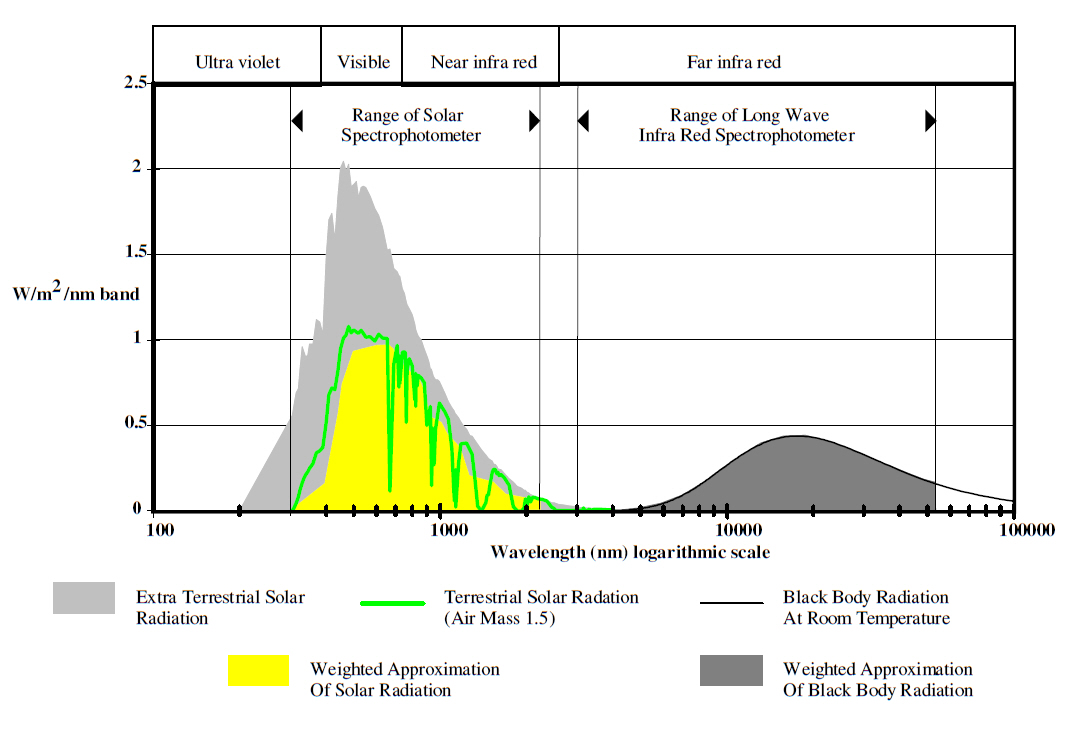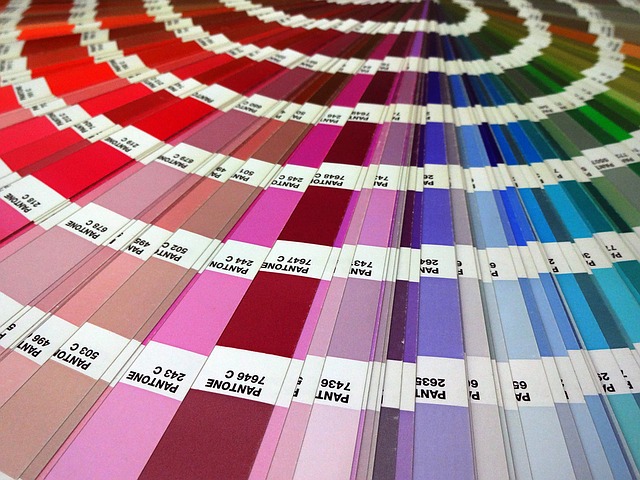Colour in the built environment
Everything that an individual perceives visually that is not to do with their perception of shape, size, surface texture, tone and motion of objects can be termed ‘colour’. Excluding colour-blind people, everything that we see has some colour associated with it. Some substances, such as oxygen, are colourless.
For colour to be perceived or to cause a sensation of colour, the following conditions must be satisfied:
- Light (a form of electromagnetic radiation) of a certain wavelength must be emitted, transmitted or reflected by an object. The wavelength will determine whether that colour is green, red or blue or a combination of these, and
- A properly functioning physiological system must be possessed by the individual to allow colour to be perceived.
Colour can only be perceived due to the presence of light and most light sources produce different light wave combinations.
Visual light comprises a wide range of different colours which can be seen by using a prism to split it into its constituent colours. This range of colours is called a ‘spectrum’ and the colours, each with a different wavelength, are always in the same order, from red at one end through orange, yellow, green, blue, indigo to violet at the other end. Red is associated with long waves, green with medium-length and blue with short waves.

|
| The full electromagnetic spectrum. Visible light falls within the range of wavelengths from approximately 380 - 740 nanometers (nm), between the infrared and ultraviolet wavebands. |
In reality, there are many, many different colours in the spectral range because it is seamless, as one colour gradually merges into the next. Each colour has its own wavelength of light which stimulates the cone cells (colour receptors) in the human eye in a different way to produce the various sensations of colour. So, when we say that ‘the banana is yellow’, it would be more accurate to say that a sensation of yellow is generated by an area of the retina (at the back of the eye) that corresponds to where light rays from the banana are being received.
[edit] Primary colours
White light contains three primary colours: red, green and blue. These colours are ‘primary’ as they are colours in their own right and cannot be replicated by mixing other colours of light. When the three are recombined, they yield white light – a process called ‘additive colour’ which is used in projectors and computer monitors. They can be combined to create any other colour (except black) and are also referred to as ‘spectral’ colours. When combined the result is:
[edit] Subtractive primary colours
In pigments, dyes and inks the primary colours are usually considered to be red, blue and yellow. These can be mixed to produce any other colour and are known as subtractive primary colours because each colour that is a combination is the result of subtracting (or absorbing) from white light – whether partially or completely – some wavelengths of light and not others. This is used by painters and printers. If all three colours are mixed, a black colour is created. By mixing the basic printer colours (cyan, magenta and yellow), the result is:
- Yellow + magenta = red
- Yellow + cyan = green
- Magenta + cyan = blue
[edit] Related articles on Designing Buildings
- Colour Rendering Index CRI.
- Daylight benefits in healthcare buildings.
- Daylight factor.
- Daylight lighting systems.
- Dichroic reflector.
- Discharge lamp.
- Electromagnetic spectrum.
- Extra-low voltage lamps.
- General lighting v task lighting.
- Illuminance.
- Lamps.
- Lamp efficacy.
- Light pollution.
- Lighting.
- Lighting energy numeric indicator LENI.
- Lighting of construction sites.
- Luminaire efficacy.
- Rights to light.
- The Anatomy of Colour.
- Visible light.
Featured articles and news
Government consultations for the summer of 2025
A year of Labour, past and present consultations on the environment, the built environment, training and tax.
Homes England supports Greencore Homes
42 new build affordable sustainable homes in Oxfordshire.
Zero carbon social housing: unlocking brownfield potential
Seven ZEDpod strategies for brownfield housing success.
CIOB report; a blueprint for SDGs and the built environment
Pairing the Sustainable Development Goals with projects.
Types, tests, standards and fires relating to external cladding
Brief descriptions with an extensive list of fires for review.
Latest Build UK Building Safety Regime explainer published
Key elements in one short, now updated document.
UKGBC launch the UK Climate Resilience Roadmap
First guidance of its kind on direct climate impacts for the built environment and how it can adapt.
CLC Health, Safety and Wellbeing Strategy 2025
Launched by the Minister for Industry to look at fatalities on site, improving mental health and other issues.
One of the most impressive Victorian architects. Book review.
Common Assessment Standard now with building safety
New CAS update now includes mandatory building safety questions.
RTPI leader to become new CIOB Chief Executive Officer
Dr Victoria Hills MRTPI, FICE to take over after Caroline Gumble’s departure.
Social and affordable housing, a long term plan for delivery
The “Delivering a Decade of Renewal for Social and Affordable Housing” strategy sets out future path.
A change to adoptive architecture
Effects of global weather warming on architectural detailing, material choice and human interaction.
The proposed publicly owned and backed subsidiary of Homes England, to facilitate new homes.
How big is the problem and what can we do to mitigate the effects?
Overheating guidance and tools for building designers
A number of cool guides to help with the heat.
The UK's Modern Industrial Strategy: A 10 year plan
Previous consultation criticism, current key elements and general support with some persisting reservations.
Building Safety Regulator reforms
New roles, new staff and a new fast track service pave the way for a single construction regulator.
























